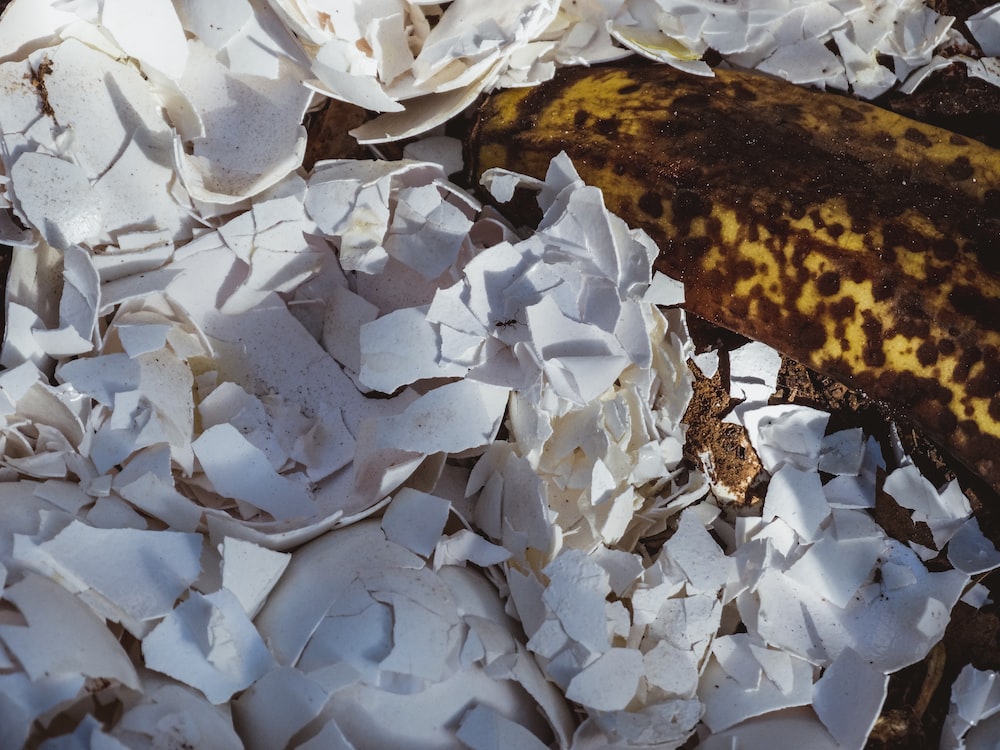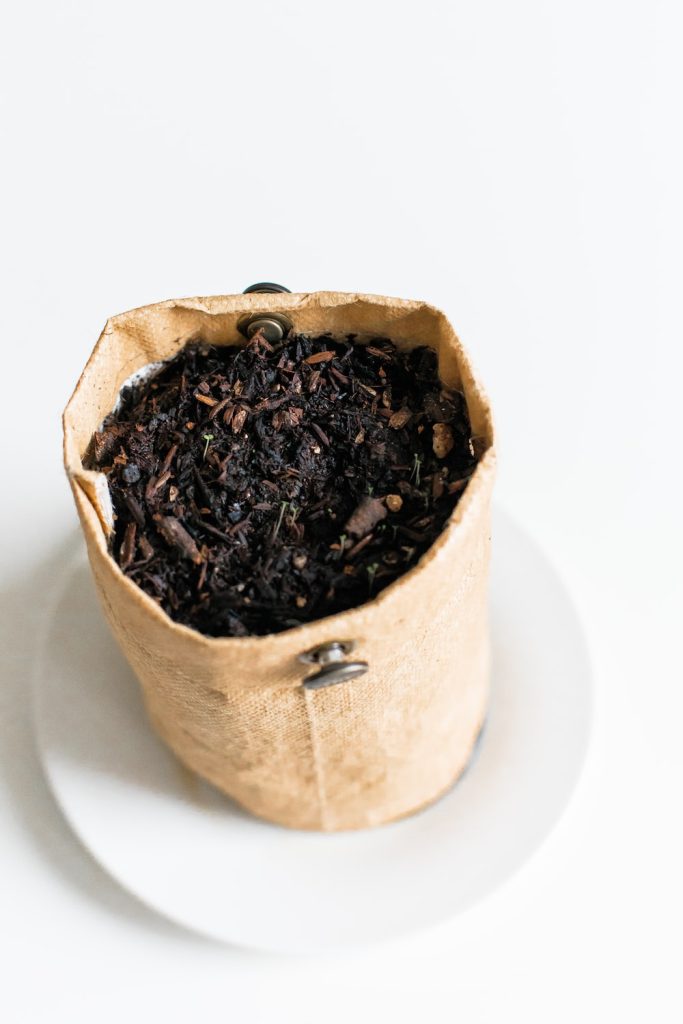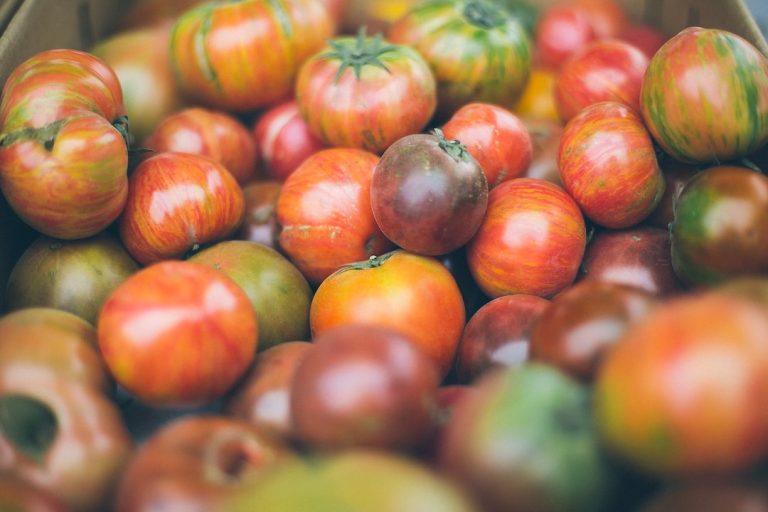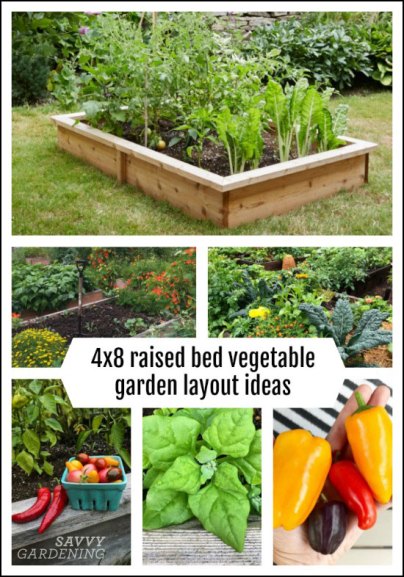Easy Guide to Making Compost from Garden & Other Wastes with Tumblers & Bins
Have you ever wondered how to turn your garden and kitchen waste into nutrient-rich soil for your plants?
The answer is composting!
Composting is the process of breaking down organic matter into a rich soil amendment. One popular way to compost is by using tumblers and bins.
Another effective method is vermicomposting, which involves using a worm composter to break down compostable materials.
Composters are also a great tool to have on hand for managing your organic waste.
Using compost tumblers or bins has several benefits for home composting, including faster decomposition, better temperature control, and reduced odor.
Cold composting and trench composting can also be successful methods for vermicomposting.
To create a successful bin system for your home composting, turn and mix your materials regularly.
If you’re interested in learning about trench composting or using crushed eggshells as a natural pest deterrent in your compost pile, we’ve got you covered too!
Plus, we’ll provide tips on what compostable materials, plant wastes, organic materials, and kitchen waste can be added to your composter.
By the end of this article, you’ll have all the knowledge you need to start home composting and making high-quality compost from your garden and other wastes with a composter.
So let’s dive in and start with cold or trench composting!
- Twin chambers: Two separate chambers allow one side to finish composting while leaving the other side available to add fresh wastes; Constant alternation of the two sides will create an uninterrupted stream of nutritious compost
- 360⁰ Tumbling Design: The rotating design prevents you from digging or mixing the pile by hand; And the deep fins on eight panels make it easier to turn the compost bin
- Excellent Aeration: Air vents can make the air fully circulate and will not cause an explosion due to excessive internal pressure; Deep fins can better break the clumps, which is conducive to the full fermentation of oxygen
- Sturdy & Durable Construction: Constructed of premium metal frame and high-quality pp plastic body, this tumbling composter is corrosion-resistant, weathering-resistant, sturdy, and durable for long-lasting service life
- Garden Gloves Included: The gloves that not only protect your hands from injury, but are also waterproof, making them easy to clean; With 4 durable ABS plastic claws for easy digging, planting and other gardening work
Last update on 2025-11-15 / Affiliate links / Images from Amazon Product Advertising API
Benefits of Composting: Improving Plant Growth and Reducing Waste
Nutrient-rich soil for plants
Composting is the process of breaking down plant wastes, organic waste, food waste, pet waste, grass clippings, weeds, and leaves into nutrient-rich soil amendments using a composter.
The ingredients for composting include fresh plant materials that are often high in carbon content, making it difficult for them to break down quickly.
However, by adding worms and other organisms to the composting process, you can create a balanced ratio of carbon and nitrogen that will help speed up the decomposition process.
This decomposed matter is then used to enrich the soil in your garden or yard, providing essential nutrients like nitrogen, phosphorus, and potassium to the plants, which helps in their growth and development.
Reduction in greenhouse gas emissions
When plant wastes, and other organic materials end up in landfills without proper treatment, they release methane gas – a potent greenhouse gas contributing to climate change.
Composting helps reduce this impact by diverting plant materials and other organic wastes from landfills and instead converting them into useful soil amendments with the help of microbes.
In addition to reducing greenhouse gas emissions, composting also helps reduce air pollution by minimizing the amount of transportation needed to haul away plants and yard trimmings.
Decrease in landfill waste.
Composting reduces landfill waste as well as its environmental impacts. Landfills are unsightly and release harmful gases such as methane into the atmosphere, contributing to global warming.
Composting your kitchen scraps and yard debris can help decrease the amount of landfill space required while also providing valuable nutrients back into your garden or yard soil. This process particularly benefits plant wastes and materials, enriching the soil and promoting healthy plant growth.
So, start composting today to give back to the plants that give us so much!
Various methods of composting
There are several ways to compost, including cold composting, hot composting, and vermicomposting (using worms).
Cold composting is a simple method where you pile up plant and food waste and let nature do its work over time.
Hot composting requires more effort since it involves creating specific layer ratios between green (nitrogen) materials and brown (carbon) materials.
This process generates heat which helps to speed up the decomposition process and enriches the soil for plants.
Vermicomposting is a more specialized form of composting that uses worms to break down organic matter into nutrient-rich castings, which can be used as fertilizer for plants.
Composting tips
It’s important to balance carbon and nitrogen materials to create healthy compost at home.
Carbon-rich items like leaves, straw, sawdust, and yard waste are excellent choices for your compost pile.
Nitrogen-rich items such as food scraps, grass clippings, and coffee grounds are also great options for enriching the soil and promoting healthy plant growth.
It’s also important to keep your compost pile moist but not too wet, as this can slow down the decomposition process. Aeration is another key factor in successful composting as it allows oxygen to enter the pile, which helps speed up the breakdown of materials.

Step-by-Step Instructions for Making Compost with Tumblers and Bins
Choosing the Right Location for Your Tumbler or Bin
The first step to home composting is choosing the right location for your tumbler or bin. You want to place it on level ground, in a spot that receives partial sunlight.
Too much sun will dry out the compost, while too little sun will slow the decomposition process.
Ensure enough space around the bin or tumbler to turn it easily.
Cold composting is also an option if plant materials take longer to decompose. Another alternative is trench composting, which involves burying food scraps directly into the soil.
Layering Materials Correctly
Once you’ve found the perfect location for your home composting, it’s time to start layering your compost bins correctly for a healthy compost pile.
Start with a layer of brown materials like dried leaves, twigs, and shredded newspaper at the bottom of your bin or tumbler.
This layer provides air pockets and helps with drainage, which is essential for creating finished compost.
Next, add a layer of green materials such as grass clippings, vegetable scraps, coffee grounds, and food waste.
These materials provide nitrogen that feeds microorganisms in the compost pile and enriches the soil. This can be done easily at home using a compost bin.
Continue alternating layers of brown and green materials until you reach about three feet in height in your home compost.
Make sure to keep your compost moist but not soggy by adding water occasionally.
Once your compost is finished, it can be used to enrich your soil.
Consider using compost bins to make the process easier.
Turning and Monitoring the Compost Pile
To ensure proper decomposition at home, you must turn your compost bin regularly. Use a pitchfork or shovel to mix up the layers every two weeks.
This helps aerate the pile and ensures all materials are broken down evenly, providing special nutrients for your soil.
While turning your home compost bin, monitor its soil temperature using a special thermometer if possible.
The ideal temperature range for the soil is between 135-160 degrees Fahrenheit (57-71 Celsius). If it gets too hot (above 170 degrees Fahrenheit), add more brown material to cool it down.
Also, watch for any unpleasant odors – this could mean that your compost bin or compost tumbler is too wet or has too much nitrogen-rich material.
Add more brown material if necessary to balance the pile and create finished compost to improve your soil.
Choosing the Right Materials for Successful Composting
Composting is a great way to turn organic waste into nutrient-rich soil that can be used in gardens and landscaping.
However, not all materials are suitable for composting.
Choosing the right materials is important to create a successful compost bin pile.
Carbon-rich “brown” materials
Carbon-rich “brown” materials provide the energy source for microorganisms that break down organic matter in the compost pile and enrich the soil. These materials include dry leaves, shredded paper, and wooden pallets.
Brown materials should make up about two-thirds of your compost bin.
- Dry leaves: Plant materials such as leaves are an excellent carbon source for compost piles. They should be shredded or chopped before adding them to the bin. This will help create a balanced mix of carbon and nitrogen that promotes healthy soil.
- Shredded paper: Plant material and paper products like newspaper or cardboard can also be added to your compost bin as a carbon source.
- Wooden pallets: Pallets can be used to create a bin for your compost pile and provide a carbon source.
Nitrogen-rich “green” materials
Nitrogen-rich “green” materials provide the protein source microorganisms need to build their bodies and reproduce.
These materials, including food scraps, plant material, and manures, are perfect for your compost bin. Green materials should make up about one-third of your compost pile.
- Food scraps: Fruit and vegetable scraps, coffee grounds, and eggshells are all great nitrogen sources for your compost pile.
- Plant material: Grass clippings, weeds (that haven’t gone to seed), and other plant trimmings are also good sources of nitrogen for a healthy compost pile. Once the finished compost is ready, it can be transferred to a compost bin for storage.
- Manures: Cow, horse, chicken, or rabbit manure can add significant amounts of nitrogen to your compost pile.
Avoidance of certain items
There are some items you should avoid adding to your compost pile because they can attract pests or slow down the decomposition process:
- Meat or dairy products
- Fats or oils
- Pet waste
- Diseased plants or weeds that have gone to seed
Maintaining the right balance
To create finished compost, you must maintain the right balance of carbon-rich and nitrogen-rich materials.
The ideal moisture level for your compost pile is around 50%, which should feel like a damp sponge.
- Add water if your compost pile feels dry.
- Turn your compost pile regularly to aerate it and speed up the decomposition process.
- If your compost pile smells bad, it may be too wet or not getting enough oxygen. Try turning it more frequently or adding more brown materials.
- Twin chambers: Two separate chambers allow one side to finish composting while leaving the other side available to add fresh wastes; Constant alternation of the two sides will create an uninterrupted stream of nutritious compost
- 360⁰ Tumbling Design: The rotating design prevents you from digging or mixing the pile by hand; And the deep fins on eight panels make it easier to turn the compost bin
- Excellent Aeration: Air vents can make the air fully circulate and will not cause an explosion due to excessive internal pressure; Deep fins can better break the clumps, which is conducive to the full fermentation of oxygen
- Sturdy & Durable Construction: Constructed of premium metal frame and high-quality pp plastic body, this tumbling composter is corrosion-resistant, weathering-resistant, sturdy, and durable for long-lasting service life
- Garden Gloves Included: The gloves that not only protect your hands from injury, but are also waterproof, making them easy to clean; With 4 durable ABS plastic claws for easy digging, planting and other gardening work
Last update on 2025-11-15 / Affiliate links / Images from Amazon Product Advertising API
Tips for Maintaining and Monitoring Your Compost Pile
Keeping a Consistent Moisture Level
One of the most crucial factors in maintaining a healthy compost pile is keeping it moist. A dry compost pile will not break down as quickly, and the microorganisms that help decompose the organic matter won’t survive.
On the other hand, an overly wet pile can become anaerobic, leading to unpleasant smells and slowing down the decomposition process.
To maintain a consistent moisture level, aim for your compost pile to feel like a damp sponge. If it’s too dry, add water using a watering can or hose with a spray nozzle.
Be careful not to overwater; you only need enough moisture to keep the materials damp.
Checking Temperature Regularly
Another important aspect of monitoring your compost pile is checking its temperature regularly. A healthy compost pile should reach temperatures between 120-160°F (49-71°C).
These high temperatures help to kill off weed seeds and pathogens while breaking down the organic matter.
To check your compost pile’s temperature, use a thermometer designed for this. Please insert it into several spots throughout the pile, taking care not to touch any metal components such as wires or nails.
If your compost isn’t heating up enough, add more nitrogen-rich materials, such as grass clippings or fresh kitchen scraps.
If it’s too hot, add more carbon-rich materials, such as leaves or shredded paper.
Adding Additional Materials as Needed
As you add new materials to your compost pile, be sure to mix them well with existing materials. This helps to aerate the pile and distribute moisture evenly throughout it.
If you notice that your compost isn’t breaking down fast enough or has stopped heating up altogether, consider adding additional materials, such as manure or finished compost, from another source.
These additives introduce new microorganisms into your compost that can speed up decomposition.
Dealing with Pests
Compost piles can attract pests such as rodents, flies, and ants. Avoid adding meat, dairy products, or oily foods to your compost pile to keep them at bay.
These materials can also slow down the decomposition process and create unpleasant smells.
If you’re using a worm composter, be sure to bury any food scraps under the bedding material so that they aren’t exposed. You can also cover your compost pile with a tarp or wire mesh to deter pests from digging in.
Storing Compost Piles
Once your compost is finished, it’s time to store it until you’re ready to use it in your garden. You can store compost piles in various containers, such as garbage cans or plastic bins with lids.
Be sure to keep your stored compost in a dry location out of direct sunlight.
If possible, turn the pile occasionally to ensure even moisture distribution and prevent clumping.
Using Red Wigglers for Composting
Red wigglers are a type of earthworm that’s commonly used for vermicomposting (composting with worms).

How to Effectively Compost Yard Waste and Other Materials
Using Grass Clippings, Leaves, and Branches
Composting is an excellent way to reduce the amount of yard waste that ends up in landfills. Grass clippings, leaves, and branches are all great materials for composting.
They are rich in nutrients and will help your garden thrive.
When using grass clippings for composting, it is important to avoid using those that have been treated with herbicides or pesticides.
These chemicals can harm the beneficial microbes that break down the organic matter in your compost pile.
If you are unsure whether your grass clippings have been treated with chemicals, it is best to err on the side of caution and leave them out.
Leaves are another excellent material for composting. They provide a source of carbon that balances out the nitrogen-rich grass clippings.
You can use any leaves for composting, but some may break down faster than others. For example, maple leaves tend to break down quickly, while oak leaves take longer.
Branches should be chopped into small pieces before adding them to your compost pile.
This will help speed up the decomposition process by exposing more surface area to the microbes that break down organic matter.
Incorporating Food Scraps into the Mix
Food scraps are another great addition to your compost pile.
They provide a source of nitrogen that complements the carbon-rich yard waste you’ve already added.
Some food scraps that work well for composting include:
- Fruit and vegetable scraps
- Coffee grounds
- Eggshells
- Tea bags
It’s important to avoid adding meat or dairy products to your compost pile as they can attract pests and create unpleasant odors.
Proper Disposal of Pet Waste
Pet waste should never be added directly to your compost pile as it can contain harmful bacteria and parasites.
Instead, consider setting up a separate pet waste composting system.
One option is to use a pet waste composter that you can purchase online or at a garden supply store. These systems break down pet waste using natural enzymes and heat, creating a safe and nutrient-rich fertilizer for your garden.
Another option is to bury the pet waste in your yard. Dig a hole at least six inches deep and one foot away from plants or vegetables.
If you have a healthy compost pile or compost bin, you can add pet waste to it for decomposition. Otherwise, add the pet waste to the hole and cover it with soil.
- World’s First Smart Waste Electric Composter: This electric composter for kitchen is the ultimate appliance for turning food and waste into nutrient-rich natural fertilizer. Best kitchen composter for your countertop.
- Eco-Friendly: Turn your kitchen to a sustainable haven with Lomi! Effortlessly transform food waste into natural fertilizer in under 24 hours. Goodbye to waste guilt and hello to eco-friendly composter, all from the convenience of your countertop.
- Easy Use: Lomi home composter machine is designed for indoor use, making it simple to waste food scraps on your countertop. Lomi features easy touch interface that allows you to start, stop, and monitor the composting process.
- Reduce Your Carbon Footprint: Compared to disposing of your waste in a landfill, using this eclectic compost bin you can reduce your carbon footprint by up to 127%. We food cycle our food waste into plant food.
- Compact Size: Small enough to put away, so beautiful you won’t want to. This Lomi composter with 3L capacity is the perfect addition to any kitchen, allowing you to reduce your waste and feed your garden with ease.
Last update on 2025-11-15 / Affiliate links / Images from Amazon Product Advertising API
Common Mistakes to Avoid When Making Compost
Composting is a great way to reduce waste and create nutrient-rich soil for your garden. However, some common mistakes people make when making compost can lead to a less effective end product.
Here are some mistakes to avoid when making compost:
Overfilling Your Tumbler or Bin
One of the most common mistakes people make when making compost is overfilling their tumbler or bin. While it may be tempting to fill it up as much as possible, this can actually slow down the composting process.
The microorganisms that break down the organic matter in your compost need oxygen to survive. The process will slow down considerably if there isn’t enough air circulation in your tumbler or bin.
Only fill your tumbler or bin about three-quarters full to avoid this mistake.
This will allow for proper air circulation and ensure your compost breaks down efficiently.
Using Too Many “Brown” or “Green” Materials
Another common mistake people make when making compost is using too many “brown” or “green” materials. Brown materials include things like fallen leaves and wood chips.
In contrast, green materials include things like grass clippings and kitchen scraps.
While both types of materials are important for creating balanced compost, using too much of one type can throw off the balance and slow down the process.
Ideally, it would help if you aimed for a ratio of about 3:1 brown to green materials.
Not Giving Enough Attention to Turning the Pile
Turning your compost pile regularly is essential for ensuring that all of the organic matter breaks down evenly and efficiently.
If you don’t turn your pile often enough, you may end up with pockets of material that haven’t broken down yet.
Aim to turn your pile at least once a week to avoid this mistake with your compost bin. Use a pitchfork or shovel to mix everything together thoroughly, breaking up any clumps or pockets of material that may have formed.
Not Adding Enough Water
Water is essential for composting, as it helps activate the microorganisms that break down the organic matter.
However, many people don’t add enough water to their compost pile, which can slow down the process considerably.
To avoid this mistake, make sure to keep your compost pile moist but not soaking wet.
If you live in a dry climate or are experiencing a drought, you may need to water your pile more frequently.
The Importance of Making Compost for a Healthier Garden and Environment
Making compost from gardens and other wastes is an excellent way to improve plant growth while reducing waste.
You can effectively compost yard waste and other materials by following the step-by-step instructions for making compost with tumblers and bins.
Choosing the right materials, maintaining and monitoring your compost pile, and avoiding common mistakes are essential to successful composting.
In summary, making compost from garden and other wastes has numerous benefits, including improving plant growth and reducing waste.
To make your compost successfully, choose the right materials, follow the step-by-step instructions for making compost with tumblers and bins, maintain and monitor your compost pile regularly, and avoid common mistakes.
Start making your compost today to create a healthier garden environment while reducing waste!
FAQs
Q: What type of materials should I use when making my compost?
A: It’s best to use a mix of “green” nitrogen-rich materials, such as grass clippings or kitchen scraps, and “brown” carbon-rich materials, like leaves or shredded paper.
Q: Can I add pet waste to my compost pile?
A: No! Pet waste should not be added to your compost pile as it may contain harmful bacteria that could contaminate your soil.
Q: How often should I turn my compost pile?
A: You should turn your compost pile every 3-4 weeks to ensure proper decomposition.
Q: How long does it take for my compost to be ready?
A: Depending on various factors like temperature or moisture levels, it can take anywhere from 2 months to a year for your finished compost to be ready.
Q: What if my compost smells bad?
A: If your compost smells bad or sour, it may be too wet or have too much green material. Try adding more brown material like leaves or shredded paper and turning the pile more frequently.









